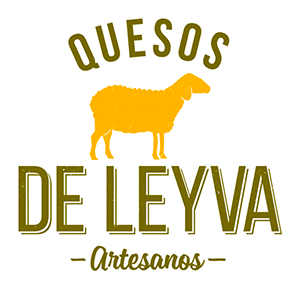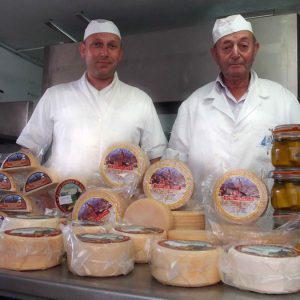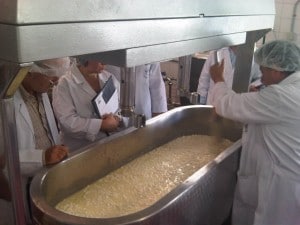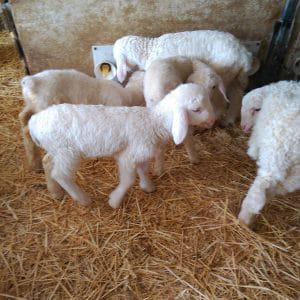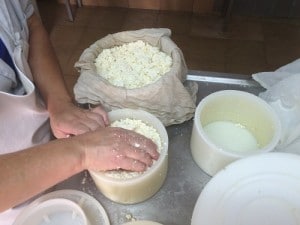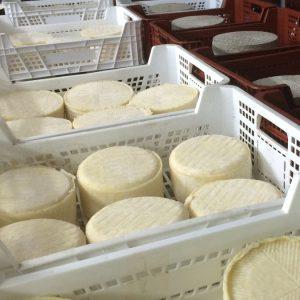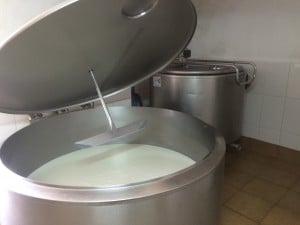Procesos de elaboración
Procesos productivos
Milking begins each day at 7 am with the entry of each batch of 64 sheep in shifts of 16 animals. A milking is done first thing in the morning and another at the end of the day, looking for the greatest difference in time between one and the other. On the day that cheese is to be made, the day begins at 5 in the morning. The milk we have in the fridge is constantly at 4º C to avoid spoiling and is in optimal conditions when making cheese. If we are going to make pasteurized cheese, we will first transfer the raw milk to the pasteurizer. But if we want to make cheese with raw milk, we will pass the milk directly to the curdling tank where we will slowly raise the temperature to 32º C, at which point we will add the rennet. The cheeses made with pasteurized milk can be consumed the moment they come out of the molds, and can also undergo curing processes in the chamber. Cheeses made with raw milk must remain in the chamber for a minimum of 60 days to eliminate certain microorganisms that pasteurization eliminates on the spot. Raw milk cheeses have more intense flavors and aromas than pasteurized milk cheeses. When it is verified that the curd is firm and does not present lumps in the cut, we will proceed to cut it with horizontal and vertical liras slowly until we achieve a grain size between pea and rice. This is when we separate the solid part from the liquid. With the solid we make cheese and with the liquid we will make cottage cheese. The curd separated from the whey, passes to the molds and these to the press. In pressing we will use cotton rags to better filter the serum. We will start with low pressures that we will increase little by little in time intervals, until the draining is correct. Once this process is finished, the cheese will be brined where the smallest cheeses will remain between 16 hours and the largest 24 hours. After salting, the cheese goes to the ripening chamber where the manufacturing process will be completed. Once the maturation period is over, they are vacuum packed and passed to the preservation chamber where they remain at 4º Celsius. In the absence of oxygen and with such a low temperature, the evolution of the cheese is paralyzed, thus guaranteeing similar flavors, smells and textures in all our products.
